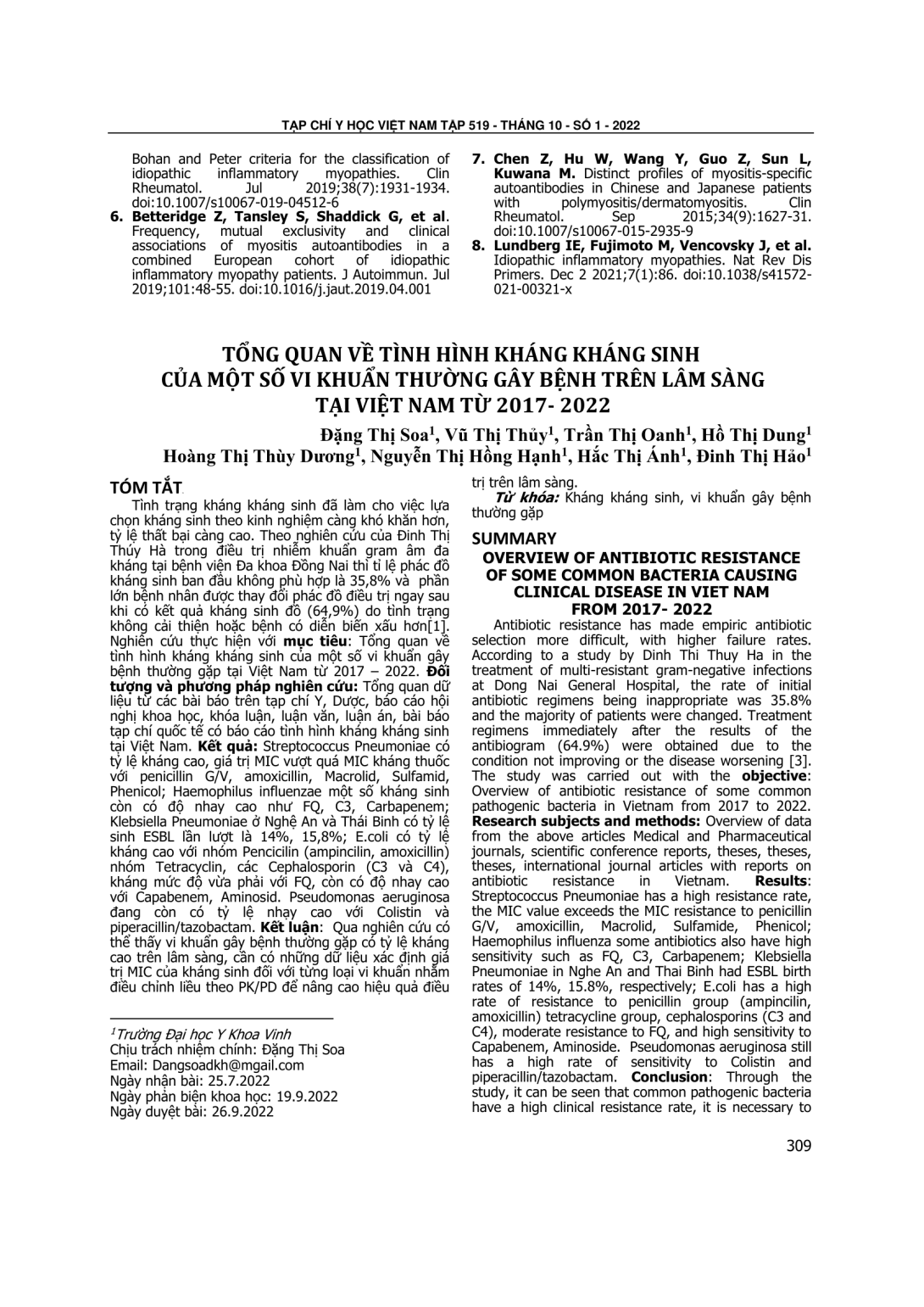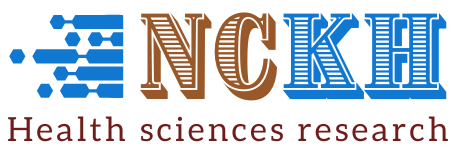
Tình trạng kháng kháng sinh đã làm cho việc lựa chọn kháng sinh theo kinh nghiệm càng khó khăn hơn, tỷ lệ thất bại càng cao. Theo nghiên cứu của Đinh Thị Thúy Hà trong điều trị nhiễm khuẩn gram âm đa kháng tại bệnh viện Đa khoa Đồng Nai thì tỉ lệ phác đồ kháng sinh ban đầu không phù hợp là 35,8% và phần lớn bệnh nhân được thay đổi phác đồ điều trị ngay sau khi có kết quả kháng sinh đồ (64,9%) do tình trạng không cải thiện hoặc bệnh có diễn biến xấu hơn[1]. Nghiên cứu thực hiện với mục tiêu: Tổng quan về tình hình kháng kháng sinh của một số vi khuẩn gây bệnh thường gặp tại Việt Nam từ 2017 – 2022. Đối tượng và phương pháp nghiên cứu: Tổng quan dữ liệu từ các bài báo trên tạp chí Y, Dược, báo cáo hội nghị khoa học, khóa luận, luận văn, luận án, bài báo tạp chí quốc tế có báo cáo tình hình kháng kháng sinh tại Việt Nam. Kết quả: Streptococcus Pneumoniae có tỷ lệ kháng cao, giá trị MIC vượt quá MIC kháng thuốc với penicillin G/V, amoxicillin, Macrolid, Sulfamid, Phenicol; Haemophilus influenzae một số kháng sinh còn có độ nhay cao như FQ, C3, Carbapenem; Klebsiella Pneumoniae ở Nghệ An và Thái Binh có tỷ lệ sinh ESBL lần lượt là 14%, 15,8%; E.coli có tỷ lệ kháng cao với nhóm Pencicilin (ampincilin, amoxicillin) nhóm Tetracyclin, các Cephalosporin (C3 và C4), kháng mức độ vừa phải với FQ, còn có độ nhay cao với Capabenem, Aminosid. Pseudomonas aeruginosa đang còn có tỷ lệ nhạy cao với Colistin và piperacillin/tazobactam. Kết luận: Qua nghiên cứu có thể thấy vi khuẩn gây bệnh thường gặp có tỷ lệ kháng cao trên lâm sàng, cần có những dữ liệu xác định giá trị MIC của kháng sinh đối với từng loại vi khuẩn nhằm điều chỉnh liều theo PK/PD để nâng cao hiệu quả điều trị trên lâm sàng
Antibiotic resistance has made empiric antibiotic selection more difficult, with higher failure rates. According to a study by Dinh Thi Thuy Ha in the treatment of multi-resistant gram-negative infections at Dong Nai General Hospital, the rate of initial antibiotic regimens being inappropriate was 35.8% and the majority of patients were changed. Treatment regimens immediately after the results of the antibiogram (64.9%) were obtained due to the condition not improving or the disease worsening. The study was carried out with the objective: Overview of antibiotic resistance of some common pathogenic bacteria in Vietnam from 2017 to 2022. Research subjects and methods: Overview of data from the above articles Medical and Pharmaceutical journals, scientific conference reports, theses, theses, theses, international journal articles with reports on antibiotic resistance in Vietnam. Results: Streptococcus Pneumoniae has a high resistance rate, the MIC value exceeds the MIC resistance to penicillin G/V, amoxicillin, Macrolid, Sulfamide, Phenicol; Haemophilus influenza some antibiotics also have high sensitivity such as FQ, C3, Carbapenem; Klebsiella Pneumoniae in Nghe An and Thai Binh had ESBL birth rates of 14%, 15.8%, respectively; E.coli has a high rate of resistance to penicillin group (ampincilin, amoxicillin) tetracycline group, cephalosporins (C3 and C4), moderate resistance to FQ, and high sensitivity to Capabenem, Aminoside. Pseudomonas aeruginosa still has a high rate of sensitivity to Colistin and piperacillin/tazobactam. Conclusion: Through the study, it can be seen that common pathogenic bacteria have a high clinical resistance rate, it is necessary to have data to determine the MIC value of antibiotics for each type of bacteria in order to adjust the dose according to PK/ PD to improve clinical effectiveness.
- Đăng nhập để gửi ý kiến
